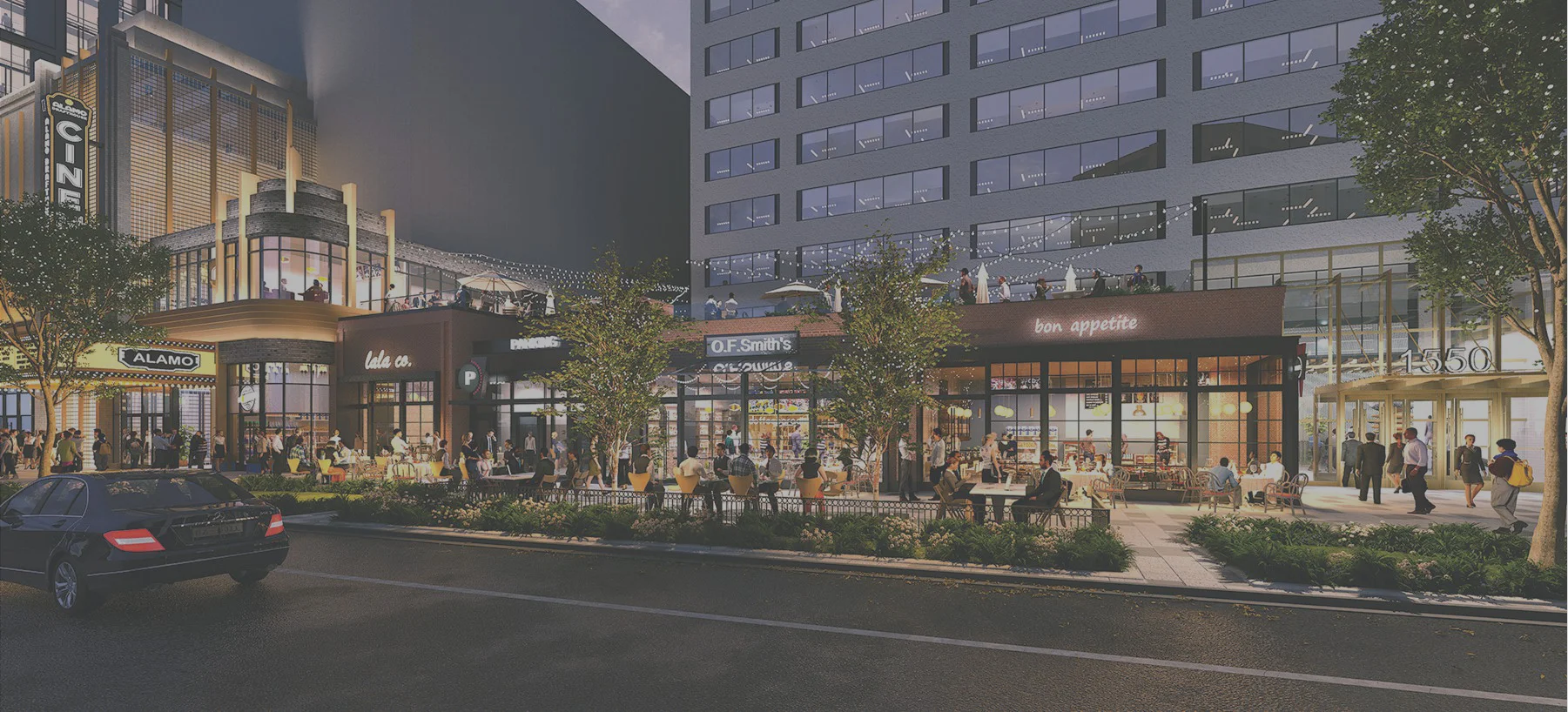Anacostia
All the money flowing into DC, making other neighborhoods feel brand-new, hasn’t much benefited areas east of the Anacostia River. But that looks to be changing, as development—especially along Martin Luther King Jr. Avenue and around the old St. Elizabeths Hospital—picks up.
Ashburn:
Loudoun County is already one of the biggest internet hubs, with most of the world’s web traffic flowing through its server farms. So it’s a logical spot for the next frontier of connectivity: the nation’s first privately owned “smart city.” Local companies 22 Capital Partners and Citylink.ai are building the Gramercy District next to the future Ashburn Metro stop.
College Park/Hyattsville:
These neighboring suburbs are Prince George’s County’s chance to create its answer to Arlington—young, upwardly mobile, increasingly urban. Befitting its status as a member of the Big Ten, the University of Maryland is upping its college-town game, working with planners on a $2-billion reinvention of a stretch of Route 1 known for bars and auto shops.
Columbia:
The planned community in Howard County turned 50 last year—and a major refresh is under way to keep it vibrant and growing for decades to come. One piece that Columbia’s original planner, James Rouse, didn’t finish building was a true downtown, so developer Howard Hughes Corporation is constructing a 391-acre core of offices, shop-ping, dining, and 6,200 units of new housing, sur-rounding Merriweather Post Pavilion.
H Street/Union Market:
Like 14th Street, Northeast DC’s H Street was devastated by the ’68 riots, but it also bears some of the same hallmarks of rebirth: Just as Studio Theatre was on 14th, the Atlas Performing Arts Center has been a pioneer of renewal on H, paving the way for restaurants and nightlife. A mixed-use project called Avec, the size of two city blocks, is slated to open next year, replacing a former strip mall.
Crystal City:
This pocket of Arlington has had a rough go of it in recent years, with an office vacancy rate surpassing 21 percent, largely due to an exodus of Defense Department workers. But its fortunes appear to be turning. JBG Smith, one of Washington’s largest developers, controls the vast majority of the area’s buildings and has declared the neighborhood’s reawakening to be a top priority.
Hill East:
Back in 2006, the federal government transferred control of 67 acres on the east side of Capitol Hill to the District. Since then, developers have eyed Reservation 13—as the plot is known—as DC’s next hot neighborhood. For the time being, it’s home to the city jail and the former DC General Hospital—now the District’s troubled homeless shelter, which Mayor Muriel Bowser says she intends to close this year.
Largo:
The most famous place in town was demolished in 2002: Capital Centre, former home of the Washington Bullets and Capitals. But in a few years, Prince Georgians should start associating Largo with a trip to the doctor, when a regional hospital opens there in 2021, along with a sprawling mixed-use development of apartments, restaurants, shopping, and a movie theater next to the Largo Town Center Metro station.
Reston:
The relatively dense, mixed-income town was considered cutting-edge when developer Robert Simon built it in the 1960s as an antidote to the postwar suburban sprawl consuming much of the country. With the second phase of the Silver Line inching closer to completion, a slew of new development is on track to keep Reston relevant into the future.
Merrifield:
Once known only as a bland zone of light-industrial warehouses and squat office parks, Merrifield has undergone an image makeover thanks to the arrival in 2012 of the Mosaic district—a walkable development of housing, shopping, and trendy restaurants that’s slated to expand. But the real game changer for the Northern Virginia neighborhood will be Inova Health System’s 117-acre Center for Personalized Health.
Rockville Pike:
Montgomery County’s White Flint Sector Plan, approved in 2010, envisions that outdated strip malls and vacant property along Rockville Pike will give way to town centers and a pedestrian-friendly streetscape. It’s taking shape with developments such as Pike & Rose and North Bethesda Market—where housing, offices, and boutiques commingle—sprouting along the busy thoroughfare.
Southwest/Southeast Waterfronts:
DC’s waterfronts show no signs of slowing. The second phase of the Wharf will break ground this year, with an additional 1.2 million square feet of development by 2022. About a mile and a half east, Capitol Riverfront is the District’s fastest-growing neighborhood.
Upper Georgia Avenue:
Neighborhoods such as Park View and Petworth became fashionable over the past decade, but farther north, Georgia Avenue has seen little growth. That’s finally changing with the long-anticipated redevelopment of the former Walter Reed Army Medical Center, where ground broke last spring on the 66-acre plot DC purchased from the feds.
Tysons:
The area will be unrecognizable by 2050—the year Fairfax County says Tysons will boast 200,000 workers and 100,000 residents (up from 117,000 workers and 20,000 residents today). Already, the pace of change is breathtaking. Four new Silver Line stops and a dozen residential and commercial buildings have arrived in the last four years.
Wheaton:
The suburb on the Red Line’s eastern side is probably best known as a mecca for strip malls with great ethnic food, but Montgomery County has designs on turning it into a walkable downtown. Within the next couple of years, a revitalization plan calls for remaking a huge surface parking lot at its center into a town square with offices for several county agencies.










